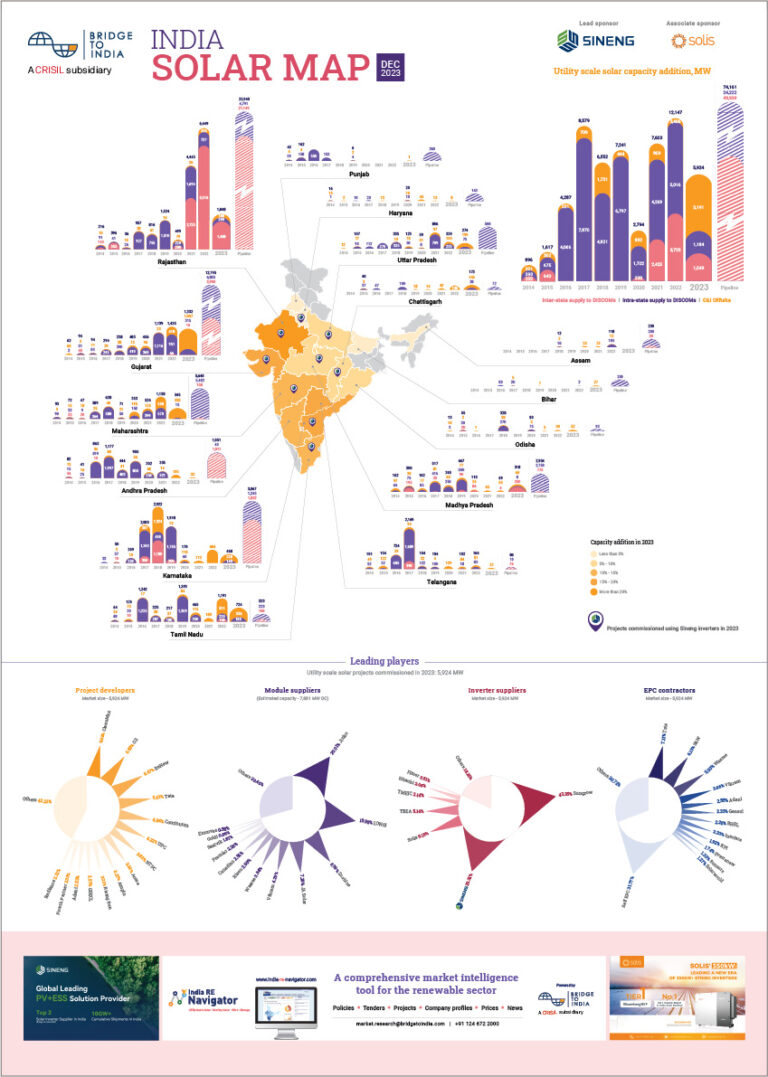CERC, India’s central power sector regulator, has revised regulations pertaining to the Deviation Settlement Mechanism (DSM) for solar and wind power projects. The regulator has both tightened the deviation bands and increased penalties for deviations. Consequences for over-injection are considerably worse with developers not to be paid anything for more than 10% extra output. Penalty for under-injection has been restructured and linked to ancillary service charges for secondary and tertiary services instead of PPA tariff.
CERC has justified making the regulation more stringent by claiming improvement in forecasting accuracy and low penalties for individual power producers due to aggregation of schedules at pooling station. Effective date of the new regulation is yet to be notified.
Table: Deviation bands and penalties under previous and revised regulations

Notes: 1. In practice, penalties are imposed on power producers on top of their entitlement for power sale payments on the basis of power scheduled quantum. Effective penalty figures in this table are presented on a net basis after accounting for payment due for scheduled power. 2. In FY 2022, weighted average ancillary service charge was INR 6.91/ kWh.
It is worth recalling that all renewable projects are required to forecast and schedule their power output in 15-minute intervals on a day-ahead basis. They may revise the schedule up to 16 times a day subject to one revision for each time slot of 1.5 hours. The objective of these regulations, which apply to all renewable power projects, DISCOMs and consumers connected to the national grid, is to minimise scheduling deviations in order to maintain grid stability and security.
Following the new CERC regulation, the states are expected to revise their respective regulations. Most state regulations follow deviation bands defined by CERC and levy penalties of INR 0.50-1.50/ kWh depending on the amount of deviation. However, some states including Gujarat, Haryana, Madhya Pradesh and Tamil Nadu have defined tighter bands. Gujarat has adopted the tightest bands at 7% for solar power and 8-12% for wind power. Andhra Pradesh even tried to remove deviation bands altogether with a proposed flat penalty of INR 2.00/ kWh for all deviations exceeding 4.89%. But following strong opposition from the developers, the state regulator withdrew draft regulation and introduced 10% tolerance bands.
The new regulation is considerably more penal for over-injection and hence, inadvertently promotes over-scheduling. An analysis of a 250 MW solar power project in Rajasthan shows a sharp increase in penalty impact under new DSM bands. Average annual penalty amount is expected to increase from about 0.15% of revenues to 1.65% of revenues for the same schedule. However, a shift to over-scheduling can bring down annual penalty amount to about 0.5-0.8% of revenues. This amount should come down further over time as the industry adapts to new regulations and forecasting ability improves.
Another unintended consequence of the new regulation and deliberate over-scheduling by renewable IPPs would be increase in real-time and ancillary services trading volumes since actual renewable power output is likely to be lower than the scheduled amount.












